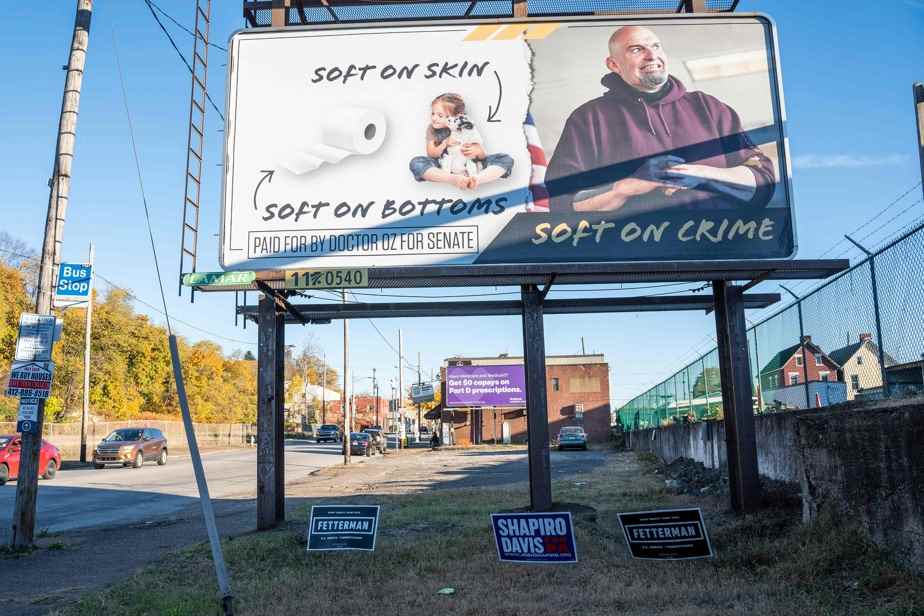The U.S. midterm elections on Nov. 8 are heading for a record $9.7 billion in spend on advertising buy-and-place, according to research firm AdImpact.
Posted at 5:00 a.m.
The amounts invested in advertising in this campaign will even exceed those of the 2020 presidential election (9.02 billion), adds AdImpact, which defines itself as a non-partisan company. By the 2018 midterm elections, advertising spending had reached US$3.96 billion.
For TV, radio and digital advertising alone, the advertising budget of parties and candidates reached 6.4 billion US dollars this year. This sum is the equivalent of the 2022 budget (6.46 billion) of the City of Montreal… with the difference that in this case, the sum is in Canadian dollars.
“As every year, the advertisements are more and more aggressive. It’s very direct, says Valérie Beaudoin, associate researcher at the United States Observatory of the Raoul-Dandurand Chair. The goal is to be as spectacular as possible to discredit the opposing candidate. Republicans especially do that. But the Democrats have also begun to do so. In Georgia they attacked the candidate [républicain au Sénat] Herschel Walker on the whole history of abortion. »
A former professional football star, Mr. Walker has been a fierce anti-abortion advocate since the start of the campaign. But two former companions of the player who became a Republican candidate allege that he paid for abortions for them.

PHOTO JOHN BAZEMORE, ASSOCIATED PRESS ARCHIVES
Herschel Walker, Republican candidate for the Georgia Senate
The sum of the expenditures covered by the study of AdImpact concerns all types of elections: in the Senate, in the House of Representatives, for the positions of governors, for the positions of representatives and state senators, other elected positions and even referenda.
On this subject, Valérie Beaudoin notes that it is a referendum question in California that has generated the most expenses. “We have allocated $400 million for two proposals that will end up on the ballots, namely whether the state should make online sports betting more accessible,” she said.
By way of comparison, the researcher notes that the senatorial race between Herschel Walker and his Democratic opponent Raphael Warnock drained 184 million in advertising purchases.
More expensive for Republicans
Is the bill rising because costs are rising or because parties are buying more ads? “I think it’s a little bit of both, in that the cost of ads is going up every year,” says Ms.me Beaudouin. But it should be noted that the broadcasters have no choice but to give the lowest price to the candidates. »
There is an important exemption, she also notes: super PACs (for political action committee, or political action committees). Technically independent of parties and candidates, these organizations collect astronomical sums and are not subject to a ceiling. And since they are not officially associated with a party, the media may charge more for the purchase of advertising.
However, it is common knowledge that the super PACs are more aligned with the Republicans. And the ads cost them more.
In a text published on October 14, the New York Times gave a good example. During an NFL game aired Oct. 2 between the Las Vegas Raiders and the Denver Broncos, Nevada viewers were treated to a slew of 30-second Senate election commercials. Cost for an ad by incumbent Democratic Senator Catherine Cortez Masto: $21,000. Cost for a Republican super PAC: $150,000.
All of these numbers make your head spin. But is it worth it? “My answer is: not necessarily,” says Valérie Beaudoin. Donald Trump is the best example of this. In 2016, he used social media when Hillary Clinton didn’t use it the way she should have. »
Over a 30-day period from late August to late September, some $50 million was spent on ad buys on Facebook and Google for the midterm campaign. This amount is likely to increase.
Much less in Canada and Quebec
A little comparison between American election expenses and those made in Canada and Quebec, to finish?
In the September 20, 2021 federal election, the authorized spending limit for the 22 registered parties was, overall, $172.4 million (rounded numbers). In the elections of 1er October 2018 in Quebec, the four parties represented in the National Assembly and their candidates spent $22.4 million (rounded figures), or 63% of the authorized amounts. The figures for the October 3, 2022 elections will be available in January.
With AdImpact, OpenSecrets and The New York Times
Learn more
-
- $2900
- Maximum amount a person can donate per election to a candidate’s committee in a U.S. federal election
SOURCE: FEDERAL ELECTION COMMISSION

